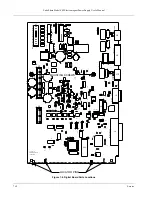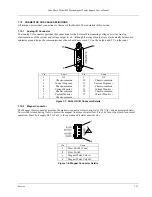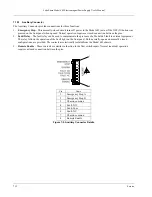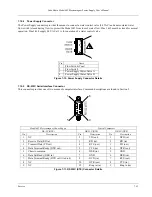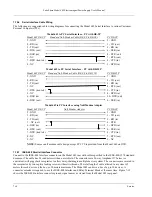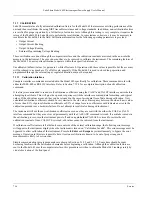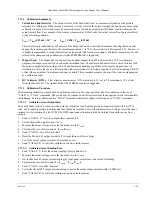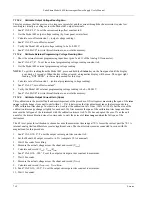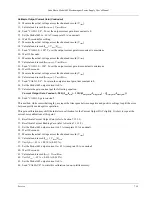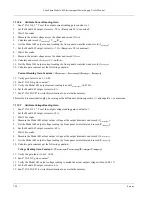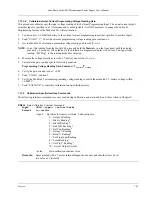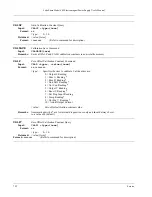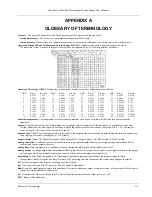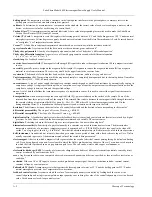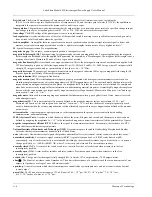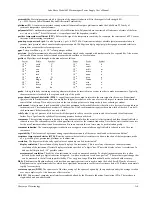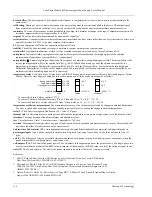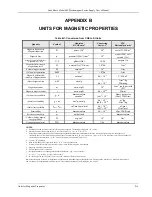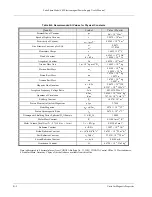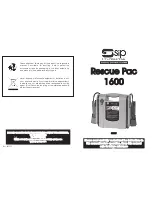
Lake Shore Model 642 Electromagnet Power Supply User’s Manual
A-2
Glossary of Terminology
boiling point
. The temperature at which a substance in the liquid phase transforms to the gaseous phase; commonly refers to the
boiling point at sea level and standard atmospheric pressure.
calibrate
. To determine, by measurement or comparison with a standard, the correct value of each scale reading on a meter or other
device, or the correct value for each setting of a control knob.
1
Carbon-Glass™
. A temperature sensing material fabricated from a carbon-impregnated glass matrix used to make the Lake Shore
Carbon Glass Resistor (CGR) family of sensors.
Celsius (°C) Scale
. A temperature scale that registers the freezing point of water as 0 °C and the boiling point as 100 °C under normal
atmospheric pressure. Celsius degrees are purely derived units, calculated from the Kelvin Thermodynamic Scale. Formerly known
as “centigrade.”
See
Temperature for conversions.
Cernox™
. A Lake Shore resistance temperature detector based on a ceramic-oxy-nitride resistance material.
cgs system of units
. A system in which the basic units are the centimeter, gram, and second.
2
Chebychev polynomials
. A family of orthogonal polynomials which solve Chebychev’s differential equation.
1
Chebychev differential equation
. A special case of Gauss' hypergeometric second-order differential equation:
(1 – x
2
) f" (x) – xf' (x) + n
2
f (x) = 0.
1
closed-loop
.
See
feedback control system.
coercive force
(coercive field)
. The magnetic field strength (H) required to reduce the magnetic induction (B) in a magnetic material
to zero.
coercivity
. generally used to designate the magnetic field strength (H) required to reduce the magnetic induction (B) in a magnetic
material to zero from saturation. The coercivity would be the upper limit to the coercive force.
cryotronics
. The branch of electronics that deals with the design, construction, and use of cryogenic devices.
1
Curie temperature (Tc)
. Temperature at which a magnetized sample is completely demagnetized due to thermal agitation. Named for
Pierre Curie (1859 – 1906), a French chemist.
current source
. A type of power supply that supplies a constant current through a variable load resistance by automatically varying its
compliance voltage. A single specification given as “compliance voltage” means the output current is within specification when the
compliance voltage is between zero and the specified voltage.
curve
. A set of data that defines the temperature response of a temperature sensor. It is used to convert the signal from the sensor to
temperature.
demagnetization
. when a sample is exposed to an applied field (H
a
), poles are induced on the surface of the sample. Some of the
returned flux from these poles is inside of the sample. This returned flux tends to decrease the net magnetic field strength internal to
the sample yielding a true internal field (H
int
) given by: H
int
= H
a
– DM ,where M is the volume magnetization and D is the
demagnetization factor. D is dependent on the sample geometry and orientation with respect to the field.
deviation
. The difference between the actual value of a controlled variable and the desired value corresponding to the setpoint.
1
differential permeability
. The slope of a B versus H curve: µ
d
= dB/dH.
differential susceptibility
. The slope of a M versus H curve:
χ
d
= dM/dH.
digital controller
. A feedback control system where the feedback device (sensor) and control actuator (heater) are joined by a digital
processor. In Lake Shore controllers the heater output is maintained as a variable DC current source.
digital data
. Pertaining to data in the form of digits or interval quantities. Contrast with analog data.
2
dimensionless sensitivity
. Sensitivity of a physical quantity to a stimulus, expressed in dimensionless terms. The dimensionless
temperature sensitivity of a resistance temperature sensor is expressed as S
d
= (T/R)(dR/dT) which is also equal to the slope of R
versus T on a log-log plot, that is S
d
= d lnR/d lnT. Note that the absolute temperature (in Kelvin) must be used in these expressions.
drift, instrument
. An undesired but relatively slow change in output over a period of time, with a fixed reference input.
Note:
Drift is
usually expressed in percent of the maximum rated value of the variable being measured.
2
electromagnet
. A device in which a magnetic field is generated as the result of electrical current passing through a helical conducting
coil. It can be configured as an iron-free solenoid in which the field is produced along the axis of the coil, or an iron-cored structure
in which the field is produced in an air gap between pole faces. The coil can be water cooled copper or aluminum, or
superconductive.
electrostatic discharge (ESD)
. A transfer of electrostatic charge between bodies at different electrostatic potentials caused by direct
contact or induced by an electrostatic field.
error
. Any discrepancy between a computed, observed, or measured quantity and the true, specified, or theoretically correct value or
condition.
2
excitation
. Either an AC or DC input to a sensor used to produce an output signal. Common excitations include: constant current,
constant voltage, or constant power.
Fahrenheit (°F) Scale
. A temperature scale that registers the freezing point of water as 32 °F and the boiling point as 212 °F under
normal atmospheric pressure.
See
Temperature for conversions.
feedback control system
. A system in which the value of some output quantity is controlled by feeding back the value of the
controlled quantity and using it to manipulate an input quantity so as to bring the value of the controlled quantity closer to a desired
value. Also known as closed-loop control system.
1

